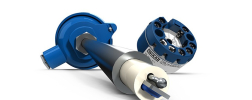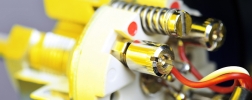For plant operators a permanent temperature sensor’s drift tends to be a pain in the neck. This defect usually becomes apparent at a following calibration – in other words: too late! Until then it might have caused a false temperature measurement and compromised …
Thermometer
Switch contacts make pressure gauges and thermometers “active”
Christoph Strebel | Know-howSwitch contacts in pressure gauges and mechanical thermometers significantly extend the functionality of the measuring instruments. They enable limit value monitoring in addition to on-site indication. Such instruments with switch contacts are therefore an important …
Stainless steel pressure gauges: Facelift brings digital features
Christopher Ott | PressureNew look plus enhanced functionality: WIKA has given its stainless steel pressure gauges and mechanical thermometers a comprehensive facelift. Customers benefit from this in several ways and at no extra cost. For example, they can use a QR code on the dial to open a …
Pressure and temperature measurement at extremely low ambient temperatures
Christopher Ott | Know-howStandard pressure gauges and thermometers generally cope with ambient temperatures down to -40 °C. But what must be the features of a mechanical measuring instrument that works perfectly well in polar climates with even lower temperatures? This can be explained using …
Pt100 in class B or F 0.3 – what does IEC 60751 say?
Roland Sachs | Know-howPerhaps you've already noticed that in some instances a Pt100 is specified with an accuracy class B or A. At other times, it has the class F 0.3 or F 0.15. This blog post looks at the specifications for Pt100 in the international IEC 60751 standard and explains the …






